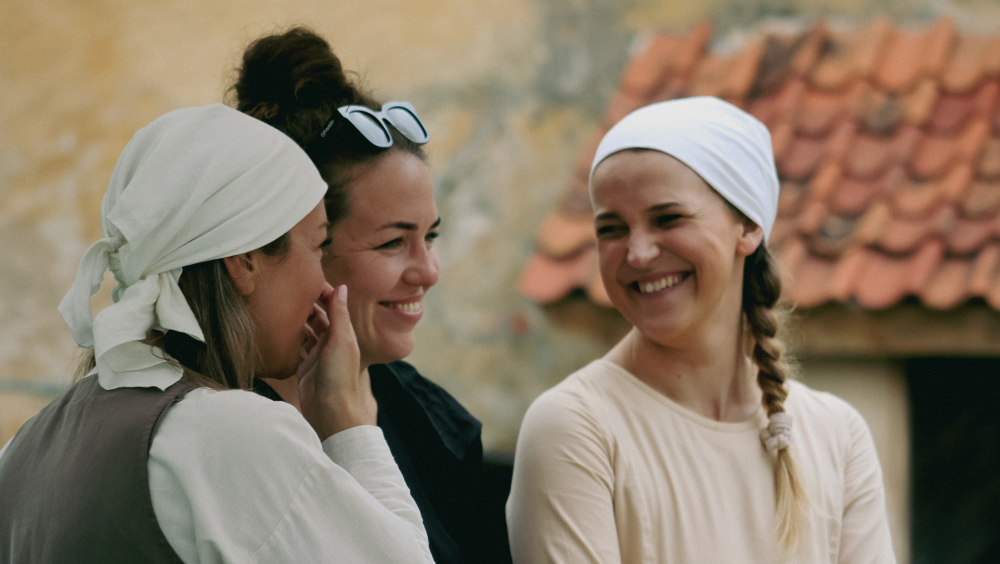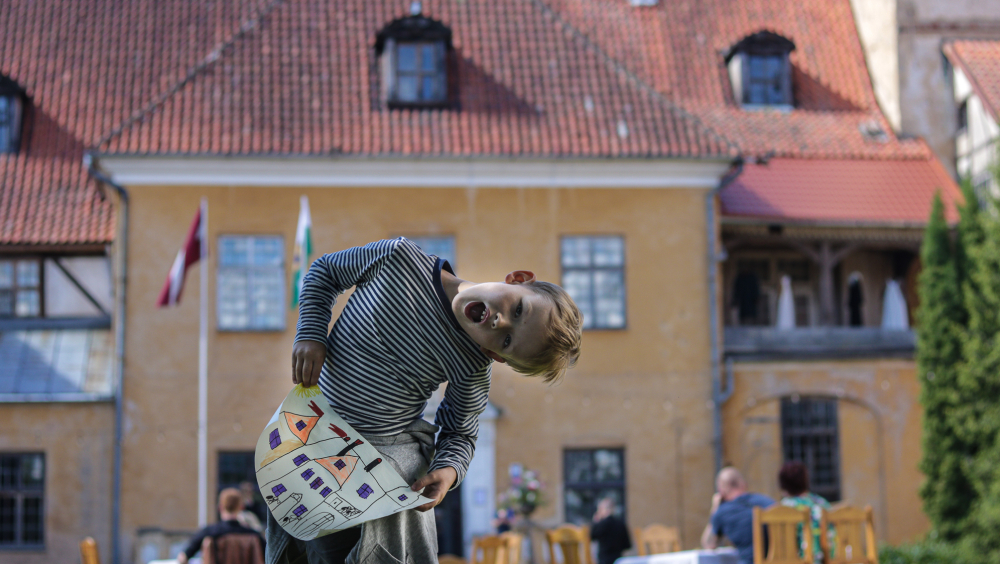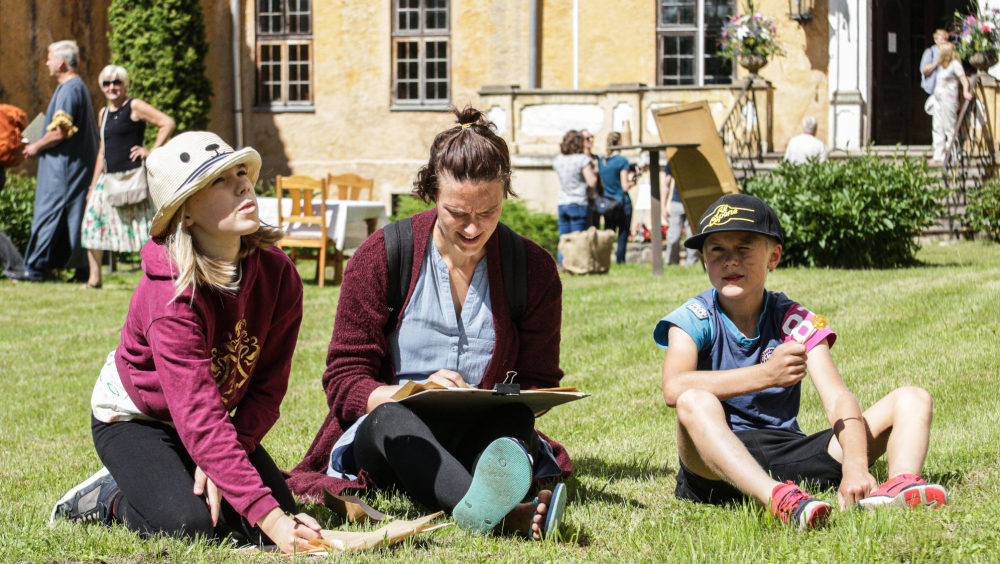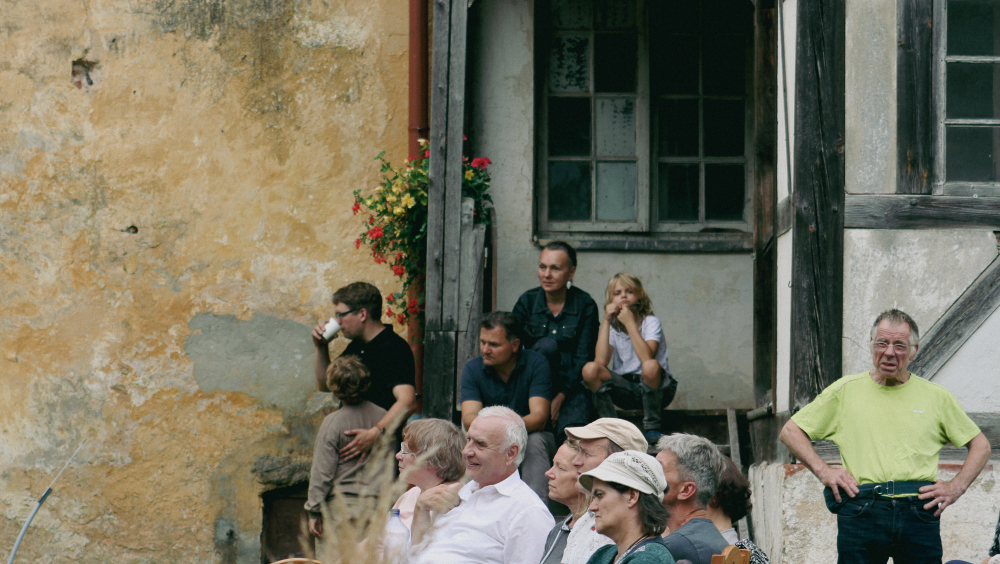Lielstraupe Castle Complex: an icon of Hanseatic heritage in rural Latvia
Lielstraupe Castle was originally built by the noble von Rosen family in the 13th century. Located at the heart of the Latvian village of Straupe, it has shaped the history of the place and region from the Middle Ages until today. It has witnessed the rise and fall of the Hanseatic League, was partly destroyed in a fire during the First Russian Revolution and served as a psychiatric and narcological hospital in Soviet times.
For centuries, the castle was in the possession of the same family almost without interuption. In 2023 it was transferred from the Latvian State to the property of Cēsis County Municipality by law. Although the ensemble is characterized by several different construction phases and has undergone some changes throughout the centuries, it is still a mostly untouched treasure with complex, diverse history seeming as “fallen out of time” as only very few heritage ensembles can be found today.
The municipality has recently opened the castle for tourism, cultural events and educational activities. A long-term concept for conservation and revitalisation of the castle is currently being finalized. After decades of disrepair and continuous use some parts of the castle are in urgent need of restoration. Still, Lielstraupe is far from being a lost place:
“Lielstraupe Castle is our identity, our roots, our sorrows, and a symbol of our hopes and dreams.”
This quote from a Straupe resident in a survey about the future of the castle illustrates its importance for the local community, which is actively involved in the development process and has strong enthusiasm for the conservation and revitalisation of Lielstraupe Castle. However, the complex is also a symbol of the pan-European Hanseatic network, in which Straupe as the world’s “smallest Hanseatic city” still plays an active role today.
Small town, big history
From the historic point of view, Lielstraupe Castle Complex is one of the few well conserved fortresses in the Baltic countries dating back to the Middle Ages. In difference to other similar complexes which either completely disappeared, or are completely or partly ruined, or are drastically covered by later changes, the original appearance of Lielstraupe Castle Complex is – despite some changes over the centuries – still easily recognisable even by visitors without particular heritage-related education.
Having been a member of the Hanseatic League since the first half of the 14th century, Straupe was part of the biggest trading network in Northern Europe of that time. Today, most people associate the Hanseatic League with harbour cities along the Baltic Sea shores. In contrast, Straupe shows that the Hanseatic League included also many smaller cities as well as inland cities, which were of similar importance for the trading network as the bigger harbour cities.
The strategic position at the historic trading route from Riga to Tartu, which still belongs to the most relevant roads in the Baltic States until today, gives visible evidence of these connections of much more than regional importance.
The continuous ownership of Lielstraupe Castle by the von Rosen family as well as their connections with other noble families, in their complexity of continuity, changes and breaks vividly illustrate the essential role of noble families of German, Swedish, Russian and other origin and their respective interactions for the region.
Lielstraupe Castle can stand representatively as an icon for heritage sites in rural Latvia, for the cultural heritage outside the cities, as well as for the cultural heritage in the interior of the country, beyond the coastal areas.
Some of the most significant aspects in this regard are the complexity and the multiple layers of original substance at Lielstraupe Castle Complex. The complex is characterized by almost ten different construction phases. Since most of the construction phases are represented to a similar extent and the building is not dominated by one phase, Lielstraupe Castle is an vivid and impressive example of the development and the repeated adaptations of an ensemble throughout the centuries.
In the year 1905, big parts of the ensemble were burned down by revolutionists. This chapter of Lielstraupe Castles history is suitable to illustrate the events of the year 1905, which are often neglected today – although they played a crucial role for the later developments in the Russian tsardom – as, from today's perspective, they stand “in the shadow” of the Russian Revolution of 1917.
The reconstruction of parts of Lielstraupe Castle by architect Wilhelm Bockslaff in the years after the big fire in 1905 is a rare and early example of a special heritage-related approach, combining orientation on the former, burned-down building with modern needs. The work is considered to be the first restoration in Latvia to be carried out according to scientific standards.
From the early 1960s, Lielstraupe Castle was used for more than half a century as a psychiatric and narcological hospital, which was a typical use of castles, manors, and palaces in Soviet times. In contrast to other cases where the heritage sites suffered due to inappropriate uses, at Lielstraupe Castle the use as a hospital even contributed to a certain extent to its conservation. By the local population this period is widely seen as a relevant, partly even positively connotated, chapter of Straupe’s history, and as an important part of the local identity.
Lielstraupe Castle, quo vadis?
Today, Lielstraupe Castle is an icon of cultural heritage in Latvia. Almost every Latvian knows about Lielstraupe Castle with its remarkable silhouette.
The biggest value of Lielstraupe Castle Complex from the heritage-related point of view is that it is almost free of recent interventions. Taking in account six decades of use as a hospital, the interventions undertaken in that time are – in comparison with other, similarly used ensembles – quite moderate and had often only been added to the existing structures instead of replacing them.
In 2023, Cēsis Municipality became the owner of Lielstraupe Castle. The municipality opened the castle for tourism, cultural events and educational activities. The castle is open for visitors 5 days a week. A tour of the buildings is an enchanting walk through time - from the Middle Ages to the present day.
A long-term concept for the conservation and revitalisation of the castle is currently in preparation. A key element in the revitalization process is the active involvement of the local community: It is essential to strengthen the identification of the inhabitants with the site and contributes to the sustainability and resilience of its operation. At the same time, the municipality seeks financial support for urgent rescue interventions at the castle’s roof structures, roofing, and ceilings.
With its continuous link to the Hanseatic League, a pan-European network which had been founded centuries before the idea of the national states in the current understanding had been established, Lielstraupe Castle Complex stands representatively for the European dimension of cultural heritage, and thus in a modern way for the understanding of culture and cultural heritage as a trigger of a pan-European identity. The castle complex gives testimony to the fact that the Hanseatic League did not only include bigger harbour cities – which are nowadays in the public opinion mostly associated with the Hanseatic League – but also smaller inland towns, which were equally important for the trading network.
But the Hanseatic League is not just a story from the past: Almost 200 cities belong to the Union of Cities THE HANSA, which is one of the Cultural Routes of the Council of Europe. The network aims to promote the joint cultural heritage and identity, and to work together for a united and peaceful Europe. Essential topics of cooperation are tourism, culture and sustainability. Straupe is an active member in THE HANSA and claims to be the world’s “smallest Hanseatic city”.
This story has been submitted by the Cultural Route of the Council of Europe THE HANSA in cooperation with the municipality of Cēsis, using extracts from “Architectural Documentation and Inventory of Lielstraupe Castle / Latvia” with kind permission of the authors Bert Ludwig and Valentina Cristini.




